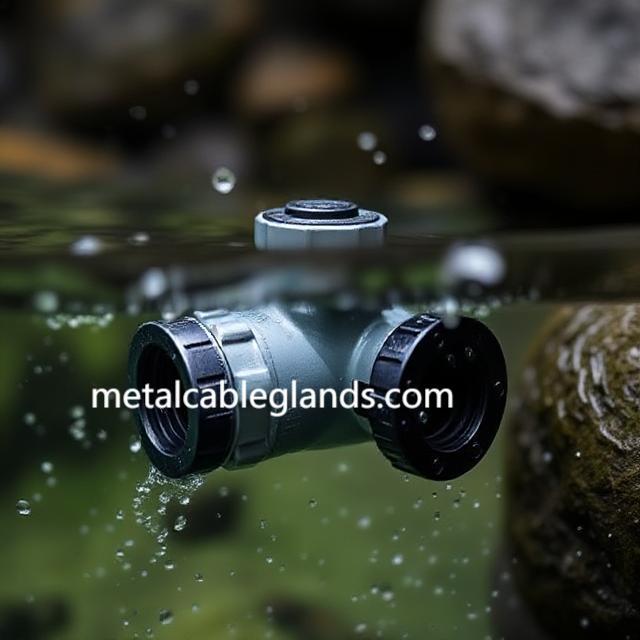Modern engineering demands materials that can maintain both durability and adaptability in complex environments. The Waterproof Breathable Valve embodies this balance by combining advanced membrane science with precision structural design. At the forefront of this innovation, Zhejiang Hongjue S Connector has integrated cutting-edge material research into its valve production, enhancing the performance and reliability of enclosures, cable systems, and outdoor electronic components.
At the heart of the Waterproof Breathable Valve lies a microporous membrane that selectively allows gases to pass through while blocking liquids and particles. This performance depends on a careful balance of surface energy, pore geometry, and polymer characteristics. The pores, measured in microns, form a labyrinth-like network that provides controlled air permeability while maintaining a formidable barrier against water intrusion. This principle of “breathability without leakage” is a cornerstone of functional membrane technology.
Polytetrafluoroethylene (PTFE) is the most common material used in these membranes due to its remarkable combination of hydrophobicity and chemical resistance. Expanded PTFE (ePTFE), achieved through a specialized stretching process, produces a web-like structure with high porosity and low surface energy. The result is a membrane that can repel liquid water while allowing vapor molecules to diffuse through efficiently. This self-regulating behavior ensures constant internal pressure equilibrium, even under rapid temperature or altitude changes.
Zhejiang Hongjue S Connector employs proprietary surface treatments to further enhance these characteristics. By modifying the microstructure at a molecular level, the membrane achieves superior resistance to oil, salt, and UV radiation. This enables long-term functionality in harsh environments such as offshore platforms, solar farms, and telecom towers. The membrane’s performance remains stable across wide temperature ranges, minimizing expansion or contraction that could otherwise compromise seal integrity.
Material science also extends beyond the membrane itself. The housing and support components surrounding the valve must be equally resilient. High-grade stainless steel, anodized aluminum, and engineering polymers are commonly used for their corrosion resistance and mechanical strength. For instance, stainless steel housings offer exceptional protection in marine or chemical industries, while lightweight polymers suit automotive and portable applications. The synergy between the membrane and housing materials defines the overall reliability of the venting system.
Key to the valve’s effectiveness is its ability to maintain consistent airflow performance over time. The flow rate is determined by membrane porosity, thickness, and environmental conditions such as humidity and air density. To maintain this delicate balance, Zhejiang Hongjue S Connector conducts rigorous quality testing that includes hydrostatic pressure, airflow calibration, and accelerated aging simulations. These ensure that each unit delivers predictable behavior under real-world stress conditions.
Another critical factor in the performance of breathable membranes is contamination resistance. Over time, dust, oil mist, or biological residues can clog the micro-pores and reduce permeability. To combat this, surface coatings and anti-fouling treatments are applied during manufacturing. These coatings form a non-stick barrier, preventing particles from adhering to the membrane surface. As a result, the valve can continue functioning effectively without the need for frequent maintenance or replacement.
Furthermore, the integration of new composite membranes is expanding the boundaries of performance. Hybrid designs that combine PTFE with polyurethane or fluorinated elastomers are emerging, offering improved elasticity and better adaptability to dynamic mechanical stress. Such innovation allows the valves to maintain integrity even when subjected to vibration or repetitive pressure cycling — a common occurrence in transportation and renewable energy systems.
Material selection is not only about endurance but also sustainability. Zhejiang Hongjue S Connector emphasizes environmentally conscious manufacturing by adopting low-emission production processes and recyclable components. This aligns with the global shift toward sustainable engineering, where long-lasting performance and reduced environmental impact are equally prioritized.
Through the intersection of advanced material science and precision engineering, modern breathable valves have evolved far beyond simple venting devices. They are now integral components in ensuring the safety, reliability, and efficiency of complex systems operating under demanding conditions.For further insights into Zhejiang Hongjue S Connector’s innovative membrane technologies and their real-world applications, visit https://www.metalcableglands.com/news/industry-news/innovative-material-science-behind-the-nextgeneration-waterproof-breathable-valve.html .



